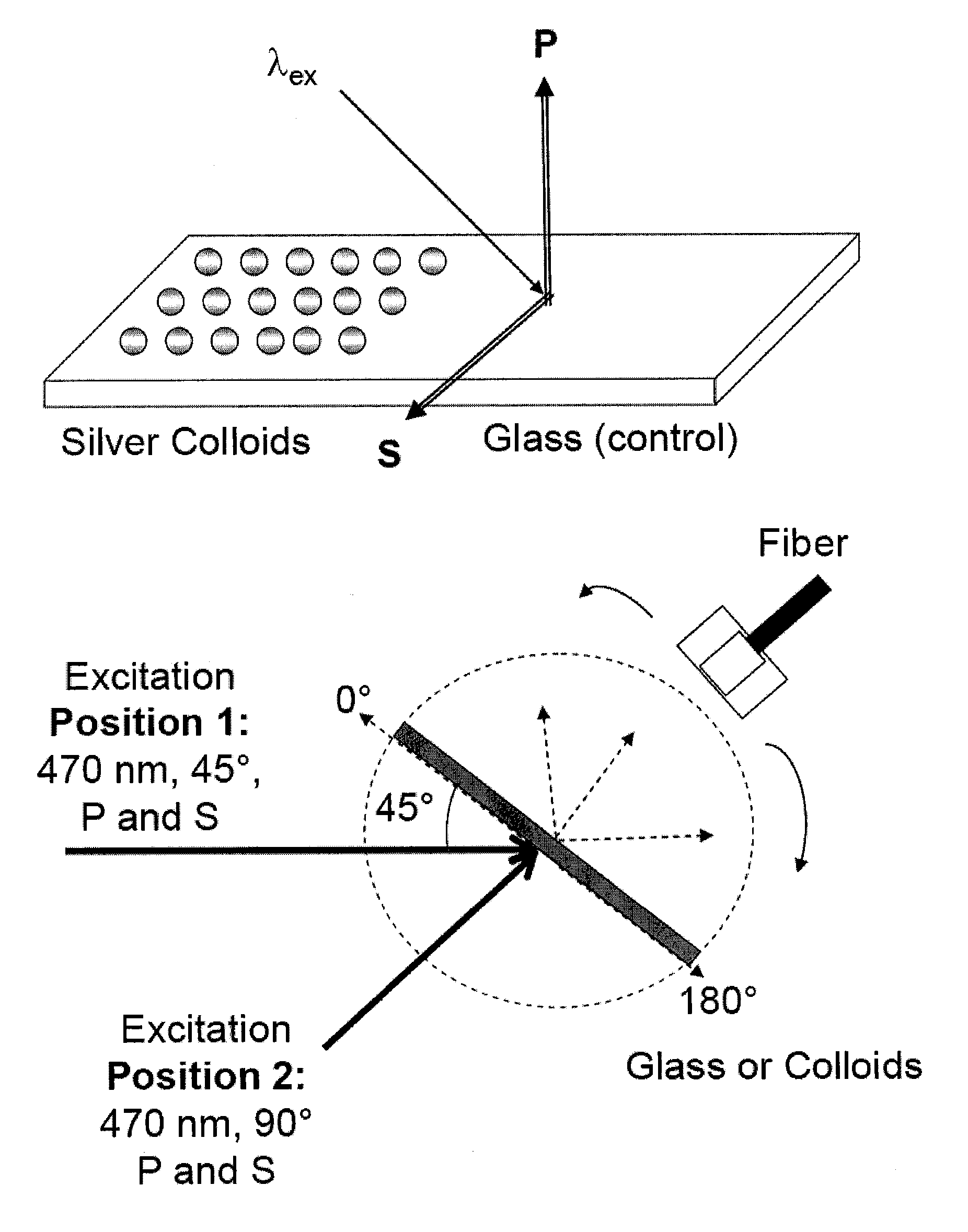Angular-dependent metal-enhanced fluorescence
a metal-enhanced fluorescence and metal-dependent technology, applied in the field of detection assays, can solve the problems of losing >95% of the total light available, almost all fluorescence in many analytical and clinical applications of fluorescence, etc., and achieve the effect of increasing the sensitivity of detection methods
- Summary
- Abstract
- Description
- Claims
- Application Information
AI Technical Summary
Benefits of technology
Problems solved by technology
Method used
Image
Examples
Embodiment Construction
[0063] It has been found that the close-proximity metallic silver islands or colloids to fluorophores can alter the radioactive decay rate and / or excitation rate of such fluorophores. Further, it has been shown that quantum yield of low quantum yield fluorophores can be increased by proximity to metallic surfaces. The enhanced excitation of fluorophores in close proximity to metallic surfaces including islands, colloids, porous and continuous surfaces can have numerous applications in the biochemical and biological applications of fluorescence because of the increased intensity of the fluorescence.
[0064] Additionally, it has been found that surface plasmons (electron oscillations on the surface of metals) are easily generated and manipulated using the appropriate metal structures, such as metal films or metallic nanostructures of the appropriate size and shape. In particular, nanostructures made from the noble metals, such as those of silver or gold, with their associated strong pl...
PUM
| Property | Measurement | Unit |
|---|---|---|
| Diameter | aaaaa | aaaaa |
| Diameter | aaaaa | aaaaa |
| Angle | aaaaa | aaaaa |
Abstract
Description
Claims
Application Information
 Login to View More
Login to View More - R&D
- Intellectual Property
- Life Sciences
- Materials
- Tech Scout
- Unparalleled Data Quality
- Higher Quality Content
- 60% Fewer Hallucinations
Browse by: Latest US Patents, China's latest patents, Technical Efficacy Thesaurus, Application Domain, Technology Topic, Popular Technical Reports.
© 2025 PatSnap. All rights reserved.Legal|Privacy policy|Modern Slavery Act Transparency Statement|Sitemap|About US| Contact US: help@patsnap.com



